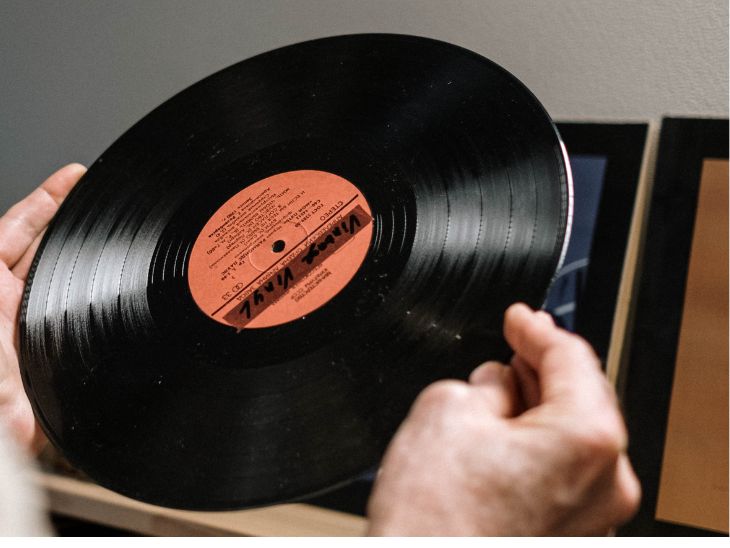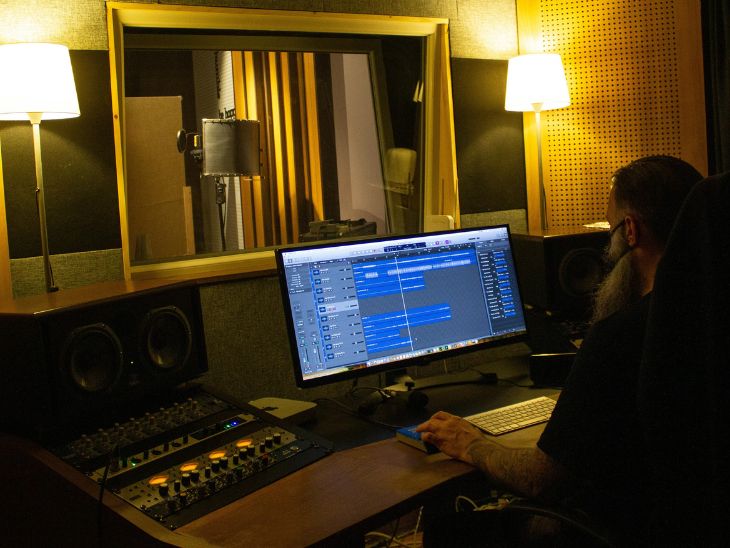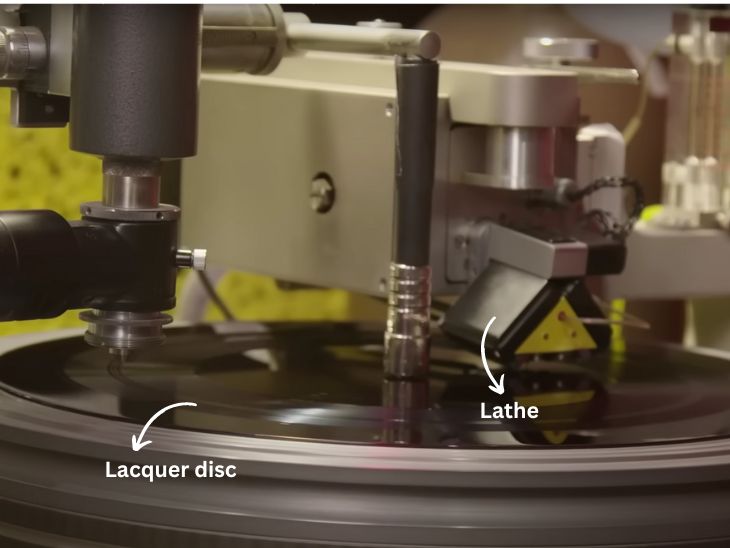How Are Vinyl Records Made? Step-By-Step Guide
When I was young, I always thought about how the music is stored in the vinyl records and I am sure you wondered that too.
Earlier, the sound was recorded on shellac or metal discs and these materials were not suitable for mass production. The first vinyl disc came in 1948 since then it has become the sole material to manufacture records.
In this article, we’re exploring the journey of making vinyl records and the art and science behind their creation. From the music production process to the final pressing of vinyl we’ll unravel the inner mechanics that transform sound into heartful music.
It would be easy to understand if you have an idea of how vinyl records work.

We will discuss the in-depth process of making vinyl records in 6 steps:
1. Recording, Mixing, and Mastering
The first step in the vinyl-making process is to have a piece of music or song, that needs to be printed on the vinyl record.
The recording is done in the studios by the musicians and singers, mostly in the digital format.
After the recording is done, the audio tracks are sent to the mixing engineer. These audio tracks contain the sound of musical instruments and vocals.

The work of a mixing engineer is to mix all the tracks, adjust, balance, and fine-tune the music to create an emotional appeal in the song.
Here, the different audio files are converted into a single file and sent for the mastering process.
The mastering engineer makes some adjustments to balance the loudness and warmth of the soundtrack. In the mastering process, music is optimized in a way that it is suitable for vinyl playback.
After that, the master recording is sent to the manufacturing plant for production of records.
2. Cutting the master
The process of vinyl making starts in this stage. A high-resolution file of the audio track is sent to the vinyl-cutting facility.
Firstly the plain lacquer disk is taken, it is the aluminum disc coated with nitrocellulose polymer known as lacquer which gives a glossy finish just like nail polish.
The disk is cleaned thoroughly so that there will be no dust on the surface before cutting.

Now this lacquer disk is placed on a cutting machine where it is moved on a turntable and the master recording is engraved on the disk using a lathe, it is a machine that has a stylus made of diamond which vibrates and carves grooves of pre-recorded music on the blank disk. The whole thing is based on the process where the recorded sound vibrations move the stylus and cut these vibrations on the lacquer.
Finally, the music is recorded, now known as the master lacquer or master disk.
The whole process is done in a soundproof room because small vibrations can affect the output of the music.
The cutting engineer keeps a close look at the whole process because even a small imperfection can degrade the quality of the sound.
This process of cutting the master can take up to 2.5 hours.
3. Making of Stamper
After cutting, the master disk is cleaned with deionized water and then coated with silver along with other solvents.
Now the disk is dipped in nickel water and given an electric charge, the nickel fills the grooves on the silver side to make a rigid metal layer and this whole process is known as electroplating.
After the electroplating process is completed the silver disk is pulled out and it is called stamper. It is the reverse image of the master lacquer.
Stampers have ridges that are molded from the grooves of lacquer. It will be used to press the pieces of vinyl.
The stamper is cleaned and trimmed from the sides to fit into the pressing machine.
A single master can press approximately 1500-2000 vinyl records, so, for large consignments more stampers are made.
4. Pressing
In this step, first PVC pellets are taken and heated to convert it into a hot molten rubbery ‘cake’ known as ‘vinyl biscuits’. Mostly, vinyl records are black, but other color combinations are also available.
The next step is to prepare record stickers or labels which we see at the center of the records to identify the record name.
The stampers are mounted on a pressing machine. Now, the molten vinyl biscuits are pressed one by one by placing in the pressing machine where they go through enormous temperature and pressure so that the grooves of the stamper are molded into the surface of flattened vinyl.
The ridges of the stamper create the grooves on the surface of the flattened vinyl disc.
The disc is quickly cooled so that the vinyl is solidified labels are properly attached at the center and extra edges are trimmed.
You can refer this video to watch the whole process.
5. Quality Control
First 8-10 records are pressed then it is sent to the sound engineer as well as the music production company to check for the quality of sound so that they are free from issues of distortion and pops.
After the approval from both, the record is finally set for mass production.
Before packing the records, a quality control engineer checks the vinyl for warps, ticks, and pops and then it is sent for packing.
6. Packing
Now, the record is ready to be packed. Finally, the vinyl is packed in inner and outer sleeves with pictures of attractive labels that contain information about a record.
The records are then bundled and shipped to local record shops.
The records are for you to collect, listen to, and immerse in the music.
Final Thoughts
We have deep-dived into the behind-the-scenes glimpse of making vinyl records and found that the grooves on the records are the just the imprints of the recorded music.
These iconic discs, with their intricate grooves and unmistakable warmth of sound; also hold a history of craftsmanship and sentiments.
Also, have you ever felt that the music of vinyl records takes us back to the world where music can be touched, felt, and heard.
FAQ
The vinyl records can last 100 years, which totally depends on the ideal conditions such as regular cleaning, storing in a place free from sunlight and humidity and instruments on which it is played.
Poly Vinyl Chloride (PVC), a synthetic plastic polymer, is the primary raw material for vinyl records. This durable, versatile substance is mixed with stabilizers and colorants to create the iconic black disc.
The cost of pressing 100 vinyl records ranges from $900-$2500, varying depending on the pressing plant, order quantity, vinyl color, and jacket design. Costs reduce as order quantity increases therefore, larger orders are more cost effective.